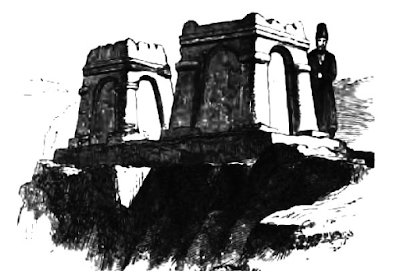SHRINES ON THE HILLS
a) Many a times we notice that the Bible records good events the good kings did and it pleased the Lord. But they didn't destroy completely all the things that the lord asked them to. They always left the shrines on the hills untouched! Why?
b) Joash, king of Judah
@1. All his life Joash did what was right because Jehoiada the High Priest instructed him. Yet even so he didn't destroy the shrines on the hills - people still sacrificed and burned incense there (2 Kings 12:2-3).
c) Amaziah, king of Judah
@1. He was a good king in the Lord's sight, though not quite like his ancestor David; but he was as good a king as his father Joash. However, he didn't destroy the shrines on the hills, so the people still sacrificed and burned incense there. (2 Kings 14:3-4)
d) The shrines on the hills were located on high places. They were places of worship on elevated pieces of ground.
e) High places were originally dedicated to idol worship (Numbers 33:52; Leviticus 26:30), especially among the Moabites (Isaiah 16:12).
f) These shrines often included an altar and a sacred object such as a stone pillar or wooden pole in various shapes identified with the object of worship (animals, constellations, goddesses, and fertility deities).
g) When the Israelites first entered the promised land, they were told to destroy the high places, idols and molten images of the Canaanite inhabitants (Numbers 33:52). They were also instructed not to worship at high places that were Canaanite sites (Deuteronomy 12:2–3). They were told Yahweh wanted to be worshiped in another way: “You shall not worship the Lord your God in that way. But you shall seek the place that the Lord your God will choose out of all your tribes to put his name and make his habitation there" (Deuteronomy 12:4–5).
h) Not all high places were dedicated to idol worship. They played a major role in Israelite worship, and the earliest biblical mention of a site of worship, later called a “high place,” is found in Genesis 12:6–8 where Abram built altars to the Lord at Shechem and Hebron.
i) Abraham built an altar in the region of Moriah and was willing to sacrifice his son there (Genesis 22:1–2). This site is traditionally believed to be the same high place where the temple of Jerusalem was built.
j) Jacob set up a stone pillar to the Lord at Bethel (Genesis 28:18–19), and Moses met God on Mt. Sinai (Exodus 19:1–3).
k) Joshua set up stone pillars after crossing the Jordan (Joshua 4:20) and considered this a high place of worship because the Israelites “came up from” the Jordan onto higher ground.
l) The high places were visited regularly by the prophet Samuel (1 Samuel 7:16). High places as sites of Canaanite idol worship (Judges 3:19) extended into the period of Elijah (1 Kings 18:16–40).
m) God would name only one high place where sacrifice was authorized, and that was the temple in Jerusalem (2 Chronicles 3:1).
n) God commanded that all other high places be destroyed. King Josiah destroyed them in 2 Kings 22—23.

Comments
Post a Comment